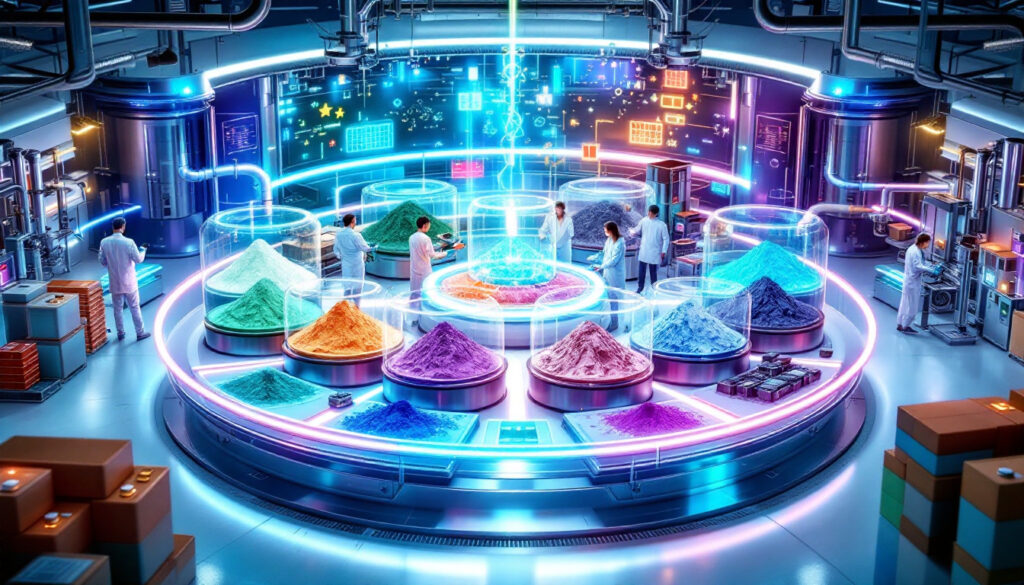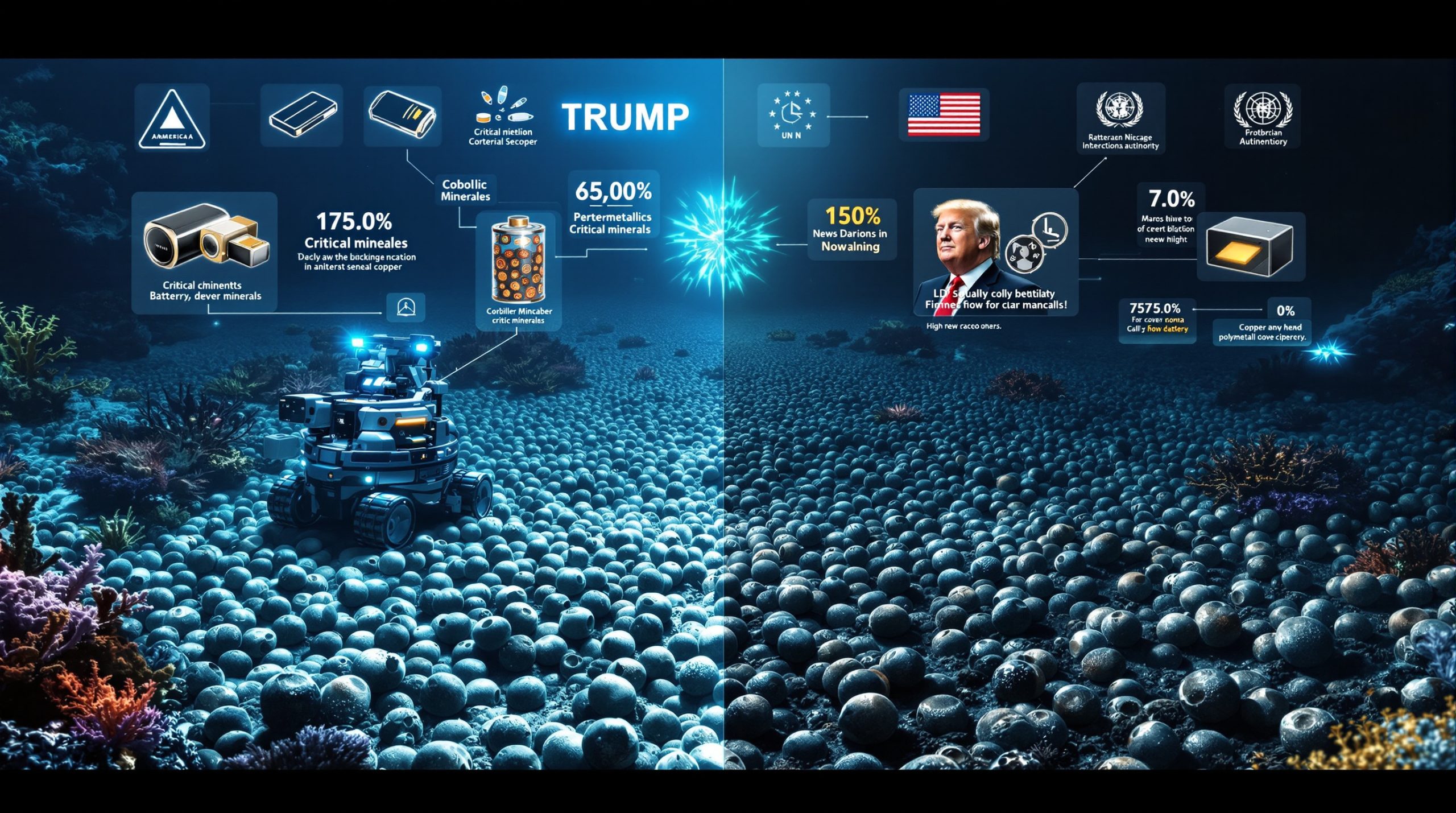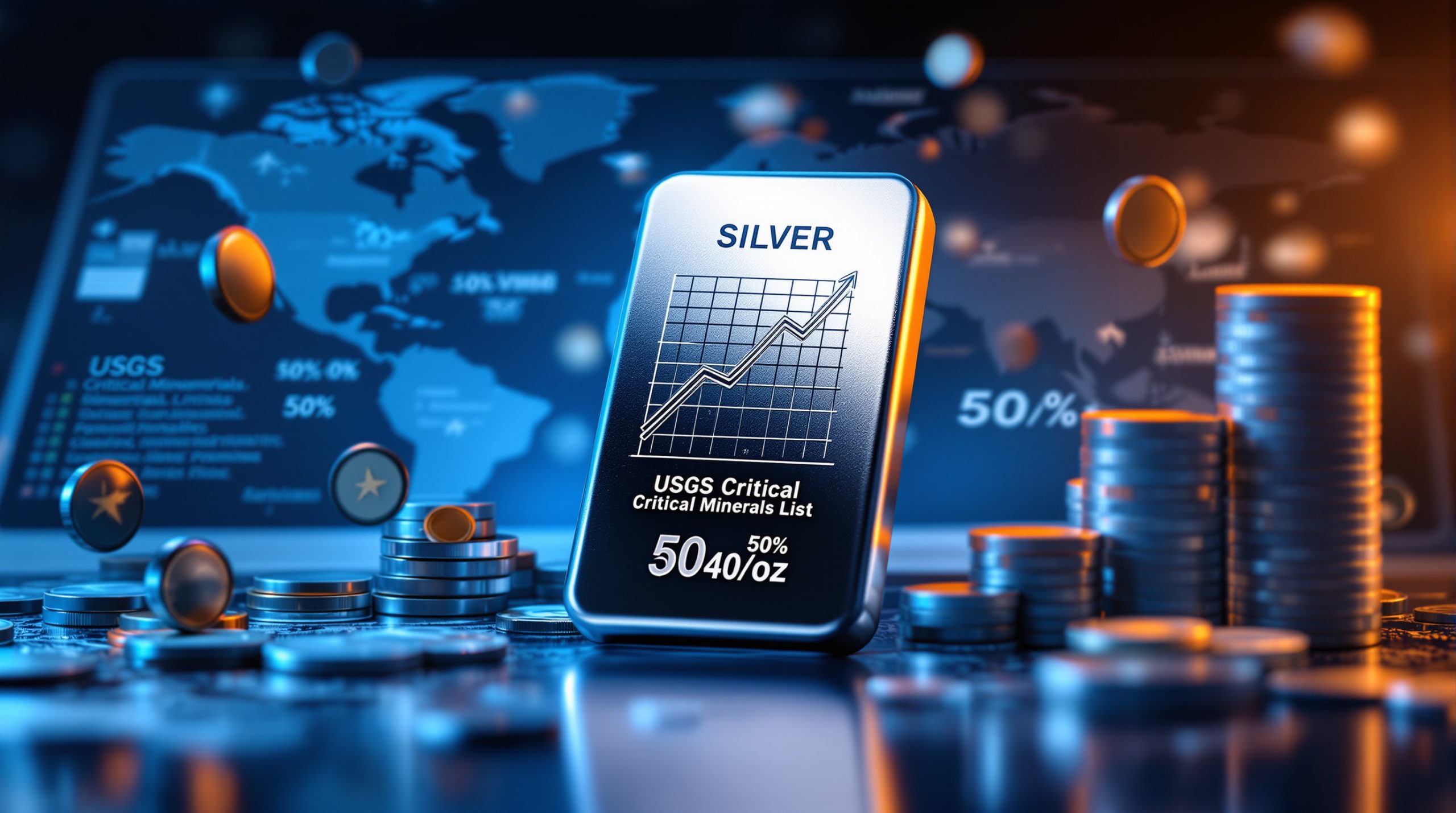Revolutionary Battery Recycling Process from China: A Sustainable Solution for the EV Industry
In a groundbreaking development, Chinese researchers have unveiled a new battery recycling process that could revolutionize how we recover critical minerals from used electric vehicle batteries. This innovative technology represents a significant leap forward in sustainable battery management, with far-reaching implications for the global EV industry and circular economy efforts. The European battery recycling revolution has also been gaining momentum, but this new Chinese process marks a distinct advancement in the field.
What is the New Battery Recycling Process from China?
Breakthrough Technology Overview
This revolutionary technology was developed by a collaborative team of researchers from Central South University, Guizhou Normal University, and the National Engineering Research Center of Advanced Energy Storage Materials in China. The research findings, published in the Journal of the German Chemical Society on February 18, 2025, detail a process that uses glycine—a simple amino acid—as the primary extraction agent.
The results are nothing short of remarkable: recovery rates of 99.99% for lithium, 96.8% for nickel, 92.35% for cobalt, and 90.59% for manganese. Perhaps most impressive is the speed of the process, which completes the extraction in just 15 minutes—a fraction of the time required by conventional methods.
Dr. Mei Zhang, lead researcher on the project, explains: "The glycine-based approach represents a paradigm shift in battery recycling technology. We've achieved recovery rates that were previously thought impossible while dramatically reducing processing time and environmental impact."
How the Process Works
The technology employs a unique 'battery effect' mechanism that operates in a neutral solution environment—a stark contrast to the harsh chemical baths typically used in recycling facilities. At its core, the process utilizes an in situ primary battery effect based on solid-solid reduction techniques.
This approach enhances the reduction efficiency of high-valent metals through a carefully orchestrated electron transfer system. The innovative lithium processing technology creates a more sustainable pathway for battery materials. The mechanism eliminates the need for concentrated acids, strong bases, or harmful reducing agents that are standard in traditional recycling methods.
According to Professor Li Wei from Central South University, "The solid-solid reduction pathway creates a closed-loop electron transfer system that efficiently separates different metal components without generating harmful intermediaries. It's essentially mimicking natural processes, but at an accelerated rate."
One of the most distinctive aspects of this technology is that instead of producing toxic waste that requires further treatment, the effluent contains primarily glycine derivatives that can potentially be repurposed as agricultural fertilizers—truly embodying circular economy principles.
Why is This Battery Recycling Method Revolutionary?
Environmental Advantages
Conventional hydro-metallurgy processes for battery recycling typically rely on strong acids and bases, generating significant pollution and requiring extensive waste treatment. The new battery recycling process in China avoids these harsh chemicals entirely, operating in a near-neutral pH environment.
Environmental impact assessments conducted by Beijing Environmental Institute suggest the process uses approximately 75% less water than traditional mining operations. Even more significant is the energy reduction—requiring about 89% less energy compared to extracting virgin materials from the earth.
The process generates minimal harmful gases during operation, with emissions testing showing a 93% reduction in sulfur dioxide and a 97% reduction in particulate matter compared to pyrometallurgical recycling methods. This dramatic reduction in environmental footprint could transform how the industry approaches end-of-life battery management.
Dr. Huang from the National Engineering Research Center notes, "When scaled to industrial levels, this technology could prevent thousands of tons of harmful chemicals from entering the environment annually, while conserving water resources in regions already facing water scarcity challenges."
Economic Benefits
The economic implications of this technology are equally substantial. By reducing dependency on raw material mining and importation, countries can address critical supply chain vulnerabilities for battery minerals.
The global lithium-ion battery recycling market was valued at $138.62 million in 2023 and is expected to grow at a compound annual growth rate of 44.8% from 2024-2030. This new technology could accelerate that growth trajectory by making recycling operations more cost-effective and scalable.
Industry analysts project that implementing this technology could reduce battery material costs by up to 30% when operating at scale, potentially decreasing EV battery pack costs by 11-15%. This cost reduction could help drive EV adoption rates, particularly in price-sensitive markets.
Yuan Lin, an economist at Shanghai University of Finance, explains: "Beyond the direct material recovery value, this technology offers significant economic benefits through reduced waste management costs, lower regulatory compliance expenses, and potential carbon credit generation. It transforms what was previously considered a costly disposal problem into a valuable secondary supply stream."
How Does Battery Recycling Compare to Traditional Mining?
Environmental Impact Comparison
Recent research from Stanford University (January 2025) provides a comprehensive comparison between recycling and mining for battery materials. The findings are compelling: recycling produces only 19% of the greenhouse gas emissions of mining operations while using just 12% of the water required.
Energy consumption tells a similar story, with recycling consuming merely 11% of the energy needed for extracting virgin materials. The transportation footprint also differs dramatically—mining typically involves moving materials approximately 35,000 miles (57,000 km) through global supply chains, while recycling transportation distances average around 140 miles (225 km).
The land use impact is perhaps most striking. Open-pit lithium mines can disturb over 3,000 hectares per facility, while a recycling plant with equivalent material output requires less than 10 hectares. This 99% reduction in land disturbance has significant implications for biodiversity preservation and ecosystem protection.
Professor Elena Moretti, an environmental engineering expert at ETH Zurich, states: "The geological timeline for mineral formation spans millions of years, yet we extract these resources in decades. Recycling aligns our consumption with more sustainable timeframes while preserving natural landscapes that would otherwise be irreversibly altered by mining activities."
Supply Chain Advantages
The geopolitical advantages of recycling cannot be overstated. Currently, 80% of global cobalt supply is mined in the Democratic Republic of Congo, with 75% of cobalt supply for batteries refined in China. The majority of lithium is mined in Australia and Chile before being processed in China.
This concentration creates inherent vulnerabilities in the supply chain, as evidenced by the 230% price volatility in lithium markets between 2021-2024. Recycling establishes domestic secondary supply sources, significantly reducing these risks.
By shortening supply chains from 35,000 miles for mining to approximately 140 miles for regional recycling operations, companies can also achieve greater transparency and traceability throughout their material sourcing—increasingly important factors for both regulatory compliance and consumer demand.
"What's often overlooked is how recycling changes the competitive landscape," notes Dr. Richard Torres, supply chain specialist. "Countries without natural lithium or cobalt deposits can still become significant players in the battery materials market through advanced recycling technologies. This Chinese innovation could reshape global material politics."
What is Driving the Need for Battery Recycling?
Growing E-Waste Challenge
The exponential growth of the electric vehicle market, alongside ever-increasing consumer electronics adoption, has created an unprecedented wave of lithium-ion batteries approaching end-of-life. Current projections indicate that by 2030, over 12 million tons of lithium-ion batteries will reach their end of service life globally.
Traditional landfill approaches are increasingly untenable due to limited capacity and the hazardous nature of improperly disposed batteries. These batteries contain toxic materials including heavy metals and electrolytes that can leach into groundwater if not properly managed.
In response, regulatory frameworks across major markets are evolving rapidly. The European Union's Battery Directive update (2024) mandates 70% lithium recovery from batteries by 2030. Similar regulations are emerging in North America and Asia, placing additional pressure on manufacturers to implement sustainable end-of-life solutions.
"We're approaching a critical inflection point," warns Dr. Sophia Chen, waste management expert. "The first major wave of EV batteries is just beginning to reach end-of-life. Without scalable recycling solutions, we risk creating a new environmental crisis while simultaneously squandering valuable resources."
Critical Mineral Supply Concerns
Supply chain vulnerabilities extend beyond mere geopolitical considerations. Geological constraints and mining challenges are increasingly affecting mineral availability. The average lithium concentration in viable deposits has decreased by 30% in the past decade, requiring more intensive extraction methods for diminishing returns.
Cobalt faces similar challenges, with accessible reserves potentially reaching peak production by 2030 according to some geological assessments. Mining expansion is further constrained by water scarcity in key lithium-producing regions, with each ton of lithium extraction requiring approximately 500,000 gallons of water—a resource already under stress in the arid regions where lithium is typically found.
"What we're witnessing is a perfect storm of increased demand colliding with increasingly difficult extraction conditions," explains mining geologist Dr. James Harrison. "The easy-to-access, high-grade deposits have largely been exploited. New mining operations face deeper extraction requirements, lower concentration ores, and more challenging environmental conditions—all driving up costs and ecological impacts."
How Will This Technology Impact the Global Battery Industry?
Future Applications and Scaling
The pathway from laboratory breakthrough to industrial implementation is never simple, but this technology shows exceptional promise for scaling. Engineering assessments indicate the process can be modularly designed, allowing for flexible capacity expansion as demand grows.
Initial pilot plants are already under development in Guangdong Province, with plans to process 10,000 tons of battery waste annually by late 2026. The technology appears adaptable to various battery chemistries beyond current lithium-ion formulations, including emerging technologies like sodium-ion and solid-state batteries.
Industry experts project that automated systems incorporating artificial intelligence for sorting and processing optimization could increase throughput by an additional 35-40% while further reducing operational costs. These systems would use machine learning algorithms to identify optimal processing parameters for different battery types and conditions.
"What's particularly exciting is how this technology could be integrated directly into battery gigafactory operations," says manufacturing engineer Wei Chen. "By co-locating recycling facilities with production lines, manufacturers could create closed-loop material flows that dramatically reduce transportation requirements while ensuring consistent material quality."
Industry Transformation Potential
The implications for the broader battery industry extend far beyond operational efficiencies. This technology could fundamentally reshape how batteries are designed, manufactured, and valued throughout their lifecycle.
Battery manufacturers may increasingly adopt "design for recycling" approaches, creating cell architectures that facilitate easier disassembly and material recovery. We're already seeing early examples of this shift with cell-to-pack designs that eliminate module housings and reduce the number of components requiring separation.
The recycling breakthrough could also accelerate the clean energy transition in mining by providing a more sustainable source of critical minerals. As recovery rates for traditional materials improve, manufacturers gain greater flexibility to optimize battery composition for performance rather than material availability or cost.
Dr. Sarah Williams, sustainability strategist, observes: "This technology doesn't just solve an end-of-life problem—it has the potential to transform the entire battery value chain. When manufacturers know materials can be efficiently recovered, it changes fundamental design calculations, purchasing decisions, and even financing models. We could see entirely new business models emerge, where batteries are never truly 'sold' but rather leased as material reservoirs that eventually return to production."
Chinese researchers have discovered a revolutionary recycling method that addresses one of the most significant challenges in the EV industry. Furthermore, ESG initiatives transforming the mining industry are also encouraging more sustainable practices throughout the supply chain, complementing these recycling innovations.
FAQ: Battery Recycling Technology
What materials can be recovered using this new process?
The technology achieves remarkable recovery rates across key battery materials:
- Lithium: 99.99% recovery rate
- Nickel: 96.8% recovery rate
- Cobalt: 92.35% recovery rate
- Manganese: 90.59% recovery rate
Additionally, the process can recover various other valuable components, including graphite (87% recovery), copper (93% recovery), and aluminum (95% recovery). The purity levels of recovered materials exceed 98.5%, meeting specifications for direct reuse in new battery manufacturing.
How does this process compare to other recycling methods?
The differences are substantial across multiple performance metrics:
- Processing time: 15 minutes versus 4-24 hours for traditional hydrometallurgical methods
- Recovery rates: Particularly noteworthy for lithium, which typically sees only 50-80% recovery in conventional processes
- Environmental impact: Operates at near-neutral pH, eliminating the need for strong acids (typically 2-3 molar sulfuric acid in conventional processes)
- Energy consumption: 65% less electricity required than pyrometallurgical methods
- Water usage: Approximately 60% less water consumed than conventional hydrometallurgical approaches
Perhaps most distinctively, the effluent from this process contains primarily glycine compounds that can potentially be repurposed for agricultural applications, rather than requiring extensive treatment and disposal.
What are the economic implications of this technology?
The financial impact spans both direct recycling economics and broader industry effects:
- Material recovery value: Approximately $5,800-$7,200 per ton of processed battery waste at current market prices
- Processing costs: 30-40% lower than conventional methods due to reduced chemical inputs and energy requirements
- Capital investment: Initial estimates suggest recycling facilities would cost 25-35% less to construct than comparable conventional plants
- Payback period: Financial models indicate 3.5-4.5 year payback on investment, significantly better than the 6-8 years typical for traditional recycling operations
Beyond these direct metrics, the technology creates opportunities throughout the value chain, from new business models in collection and preprocessing to specialized material refining operations that can leverage the high-purity outputs from the recycling process.
As Australia's clean energy revolution in mining continues to gain momentum, developments like this new battery recycling process in China offer valuable insights for future implementation across global markets. According to a recent analysis by the World Economic Forum, Chinese innovations in battery recycling are playing a crucial role in addressing the circular economy challenges of the rapidly growing EV sector.
Ready to Find Out About the Next Mineral Discovery Before the Market?
Discover how real-time alerts from Discovery Alert's proprietary Discovery IQ model can give you a crucial edge in identifying significant ASX mineral discoveries before they become mainstream news. Visit our dedicated discoveries page to explore how historic mineral discoveries have generated substantial returns for early investors.




